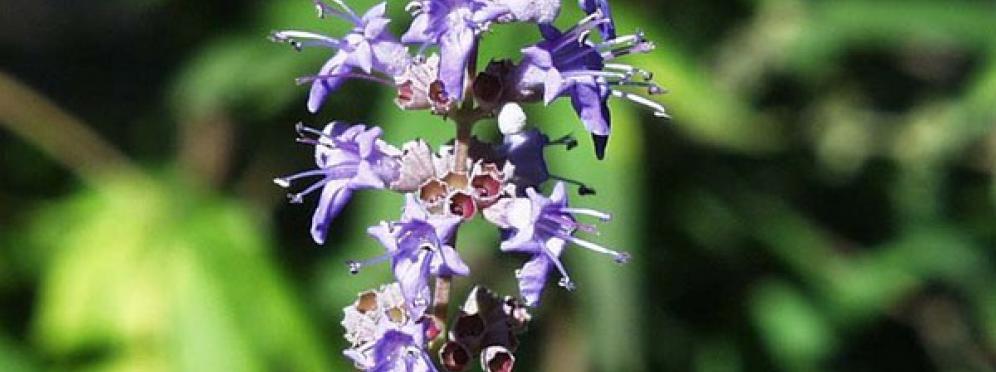Chaste tree
The chaste tree belongs to the verbena family, and is one of the typical plants found in undergrowth near Mediterranean rivers, i.e., a type of vegetation and a species which deforestation and reclamation of land have made extremely rare, although it is commonly grown as an ornamental.

The chaste tree belongs to the verbena family, and is one of the typical plants found in undergrowth near Mediterranean rivers, i.e., a type of vegetation and a species which deforestation and reclamation of land have made extremely rare, although it is commonly grown as an ornamental. Known as an anaphrodisiac since ancient times - the Greek word a-gonos means childless – the chaste tree was mentioned for the first time by the Greek doctor Dioscorides, but the name was later changed into agnus and lost its original meaning. Homer called it lyos, a word of Indo-European origin common to various southern Italian and Sicilian dialects (lágano, láganu, lácana, lágomu) with the same meaning as the Latin vitex, i.e. a pliable twig used for tying vines.
It is a small tree or shrub of about 5-6-metres, with palmate, five- to seven-lobed leaves, and flowers with short peduncles in clusters along its spikes. Every flower has a hairy calyx and a violet, occasionally white, irregularly bilabiate corolla, from which the stamens hang. Its dried fruit has been known among herbalists for over 2000 years, as ancient treatises report. In the 1st century AD, Dioscorides recommended their use to quell lustful desires. According to the Roman naturalist Pliny the Elder, they were scattered on the beds of the Athenian soldiers’ wives to preserve the women’s faithfulness while their husbands went to war. The fruit has a spicy taste and is also known as monk’s pepper, because monks used it as an anaphrodiasiac to maintain their vow of chastity. The plant contains the alkaloid viticin, diterpenes, flavonoids (especially casticin), iridoid glycosides, and a bitter essence. Its fruit may affect the endocrine system, particularly in the production of hypophysial hormones. This is why it can be used to treat menstrual disorders, particularly premenstrual symptoms. Because of its hormonal activity, the plant should be used with great care. In popular herbalist tradition, the chaste tree was also used to favour lactation, but this is still to be proven. There are also insufficient data regarding its safety, and its use in pregnancy and while breastfeeding is not recommended.






